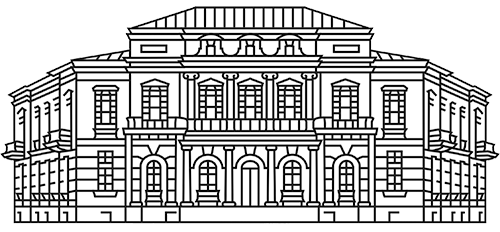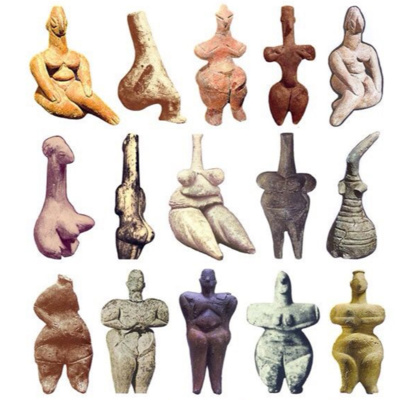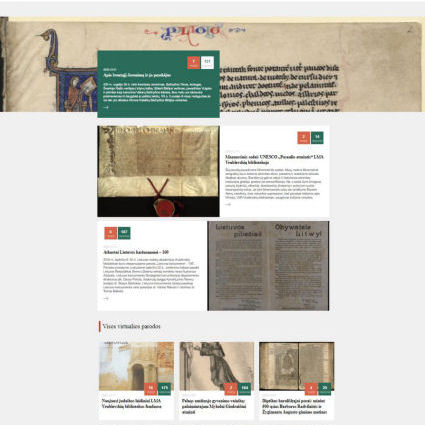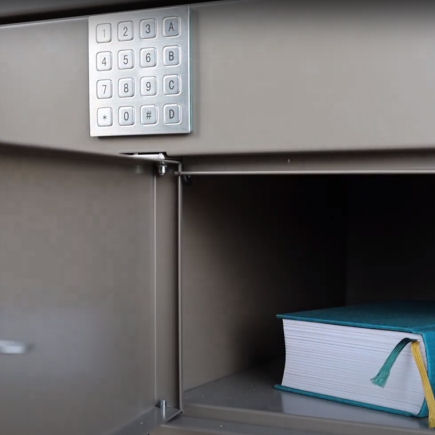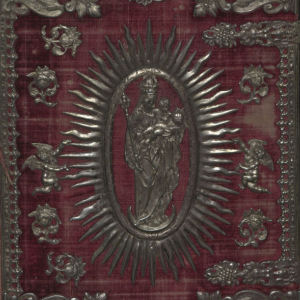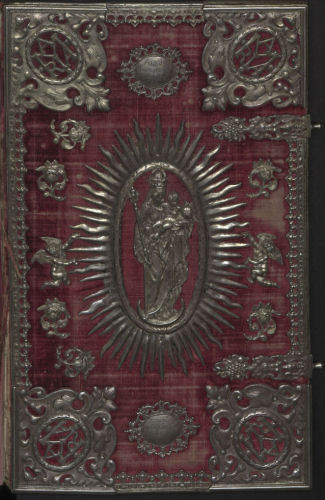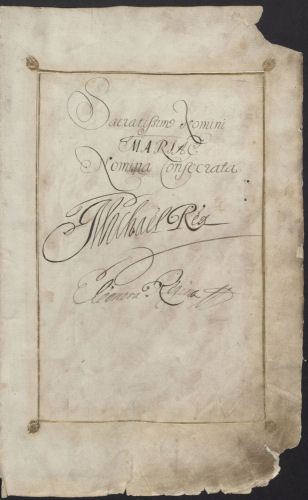Paskaita „O kas tos figūrėlės? Žmogaus vaizdavimas akmens amžiuje“ EN
Paskaita „O kas tos figūrėlės? Žmogaus vaizdavimas akmens amžiuje“
Ši paskaita skirta archeologės Rimutės Rimantienės 100- mečiui. Kaip R. Rimantienė, tyrinėdama kadaise senojoje Nidoje gyvenusių puodžių pagamintų indų šukes su itin retais mūsų kraštuose žmonių atvaizdais juos interpretavo? Lektorė Lietuvos istorijos instituto vyresnioji mokslo darbuotoja, archeologė Agnė Čivilytė.
KLAUSYTI ĮRAŠO
Virtual Exhibition Space
Virtual Exhibition Space
We are delighted to present you our new virtual exhibition space, entitled Virtual Tales and created with funding from the Lithuanian Council for Culture. It will host virtual exhibitions dedicated to various subjects and individuals, as well as events and phenomena in the history of art and culture.
At present, the Virtual Tales space features the exhibition “On St. Jerome and His Followers” put together to mark the 1600th anniversary of the Saint’s death. The authors of the exhibition are Agnė Zemkajutė, bibliographer of the Old Periodicals Unit at the Rare Books Department of the Wroblewski Library and Dr. Skirmantė Smilingytė-Žeimienė, Senior Researcher of Department of Sacral Art Heritage of the Lithuanian Culture Research Institute. The exhibition presents unique documents reflecting the life of St. Jerome and kept in the Wroblewski Library and other memory institutions. The exhibition is greatly enhanced by the images of St. Jerome from Lithuanian Churches selected and described by Dr. Smilingytė-Žeimienė.
The visitors are welcome to explore two more virtual exhibitions. The first, “The Gardens of Mnemosyne. UNESCO’s “Memory of the World” in the Wroblewski Library of the Lithuanian Academy of Sciences”, features 12 documents and part of a collection from the holdings of the Wroblewski Library that are included in the UNESCO “Memory of the World” national register. The author of the exhibition is Dr. Daiva Narbutienė, the descriptions of manuscript documents are by Dr. Rima Cicėnienė and Erika Kuliešienė. The other currently featured exhibition, “The 100th Anniversary of the Restored Armed Forces of Lithuania”, presents the history of the restored Lithuanian Army as told by the documents held by the Wroblewski Library. The author of the exhibition is Rasa Sperskienė.
New exhibitions showcasing cultural heritage from the holdings of the Wroblewski Library will be regularly added to the space.
To mark the 100th birth anniversary of Marija Gimbutas, the Library presents a virtual exhibition entitled “The Life and Research of Marija Narbutas in Sixteen Pages”, which will soon be opened to the public. The exhibition will unveil the acclaimed archeologist’s documents and photographs from the holdings of the Library. The design and texts are by Rasa Sperskienė.
You are cordially invited to explore the virtual exhibitions hosted at the Wroblewski Library of the Lithuanian Academy of Sciences: Virtual Tales.
Vieša paskaita „LDK žvalgybos istorijos apžvalga nuo XIII a. iki XVII a. vidurio“
Vieša paskaita „LDK žvalgybos istorijos apžvalga nuo XIII a. iki XVII a. vidurio“
Viena iš gegužės mėnesį Bibliotekoje numatytų viešųjų paskaitų renginių lankytojams pateikiama vaizdo ir garso pavidalais. Tai VU Istorijos fakulteto Senosios ir vidurinių amžių istorijos katedros doktorantės Vitos Diemantaitės paskaita „LDK žvalgybos istorijos apžvalga nuo XIII a. iki XVII a. vidurio“.
LDK žvalgybos istorijos pradžia sutampa su valstybės susidarymo laikotarpiu, bet ši tema atskiro tyrėjų dėmesio iki šiol nėra sulaukusi, atsidūrusi įvairių kitų tyrimų paraštėse. Pranešėja savo paskaitoje apibrėžia, kas laikoma žvalgybine veikla, apžvelgia LDK žvalgybos ankstyvąją raidą, išaiškina, kas buvo žvalgybinių žinių naudotojai, gavėjai ir teikėjai. Ar žvalgyba buvo tapatinama su šnipinėjimu, ar ji buvo siejama su nusikaltimo samprata – į šiuos ir kitus klausimus atsakymus sužinosite pažiūrėję vaizdo įrašą.
Book-O-Mat
Book-O-Mat
We are glad to present you a new service offered by the Library, contactless book pick-up from a Book-O-Mat self-service locker. This is a way for the users of the circulation service to collect requested books in a non-contact way 24 hours a day. The Book-O-Mat is located next to the entrance to the Library.
How does the Book-O-Mat work?
Please request books online or through a card catalogue.
Having requested the books, please submit your request to collect them through the Book-O-Mat by completing the form HERE: enter your reader’s card number and cell phone number.
Please first wait until a text message with a Book-O-Mat log-in code arrives to your cell phone and only then proceed to pick up the books.
Having received a text message confirming your request, go to the Book-O-Mat, press the asterisk and enter the code you received. Take the books.
You may pick up checked-out books from the Book-O-Mat 24 hours a day within the time specified in the text message.
If you wish to pick up checked-out books from the Book-O-Mat, please submit your application no later than two workdays before the hold expiration date.
If you cannot request publications online or wish to search for materials in a card catalogue, please call +370 5 262 3678 or write online to Ask A Librarian.
The Book-O-Mat is not for returning books. All checked-out publications should be returned to the Library.
If you have any questions, please write to abonementas@mab.lt or call +370 5 262 3678.
The Sweetest Name of Mary: The Arch-Fraternity at Vilnius Cathedral (1670–1938)
The Sweetest Name of Mary: The Arch-Fraternity at Vilnius Cathedral (1670–1938)
Among valuable items held by the Manuscript Department of the Wroblewski Library of the Lithuanian Academy of Sciences is the member book of the Arch-Fraternity of the Sweetest Name of Mary at Vilnius Cathedral (Album Archiconfraternitatis Dulcissimi Nominis Mariae).
350 ago, in the spring of 1671, on March 8, an impressive procession left the Dominican Church of the Holy Spirit and proceeded through the Old Town of Vilnius, ceremonially leading the Arch-Fraternity of the Sweetest Name of Mary into Vilnius Cathedral. At first, the Arch-Fraternity occupied the Goštautas Chapel, but later moved to the adjacent chapel, which was then given the name of Mary (now it is the Chapel of the Exiles). The main initiator of the Arch-Fraternity was the Auxiliary Bishop of Vilnius and Titular Bishop of Gratianopolis Mikołaj Słupski (~1613–1693).
A lavishly decorated book was made for members of the Arch-Fraternity to sign in. The first members to put their signatures in the books were the King of Poland and the Grand Duke of Lithuania, Michał Korybut Wiśniowiecki (1640–1673), and his wife Eleonore Maria Josefa von Österreich (1653–1697). Later the future ruler Jan III Sobieski (1629–1696), the rulers Augustus II (1670–1733) and Augustus III (1696–1763), bishops, prelates, canons and other clergy, senior government officials with their family members, monastic communities, and other believers joined the Arch-Fraternity, most new members having signed in their own hand. The pages of the book also bear autographs of prominent people from later times. For example, the acclaimed German theologian and Byzantinist, a professor at the Pontifical Oriental Institute in Rome, Jesuit Georg Hofmann (1885–1956) signed himself in as a member in 1923.
The activities of the Arch-Fraternity went on intermittently for more than 260 years, sometimes slowing down or pausing for a while. With a view to reviving the Arch-Fraternity, prayer books reminding of its former glory and popularity, and of the illustrious members, were published in 1755, 1845, 1907, and 1928. The fraternity faced severe tribulations after the collapse of the Chapel of the Name of Mary in 1769, when the bell tower fell on it during a storm.
The binding of the member book of the Arch-Fraternity of the Sweetest Name of Mary is considered to be one of the most beautifully decorated works by Vilnius bookbinders. The book is covered in raspberry-colored textile with silver fittings and decorated with the monogram of the Holy Virgin Mary and an iconographic scene (Holy Virgin Mary with the Infant, surrounded by iconographic elements of the Immaculate Conception). This valuable member book was for a while kept in the treasure of Vilnius Cathedral.
Before World War II, the book was hidden together with the archive of the Vilnius Chapter. The archive was discovered in the spring of 1956, when repairs were being made on Vilnius Cathedral (which had been requisitioned from the Catholic Church) to adapt it for housing the Vilnius Picture Gallery. The discovered archive along with the Arch-Fraternity’s member book was handed over to the Manuscript Department of the then Library of the Lithuanian Academy of Sciences.
Dr. Gita Drungilienė
